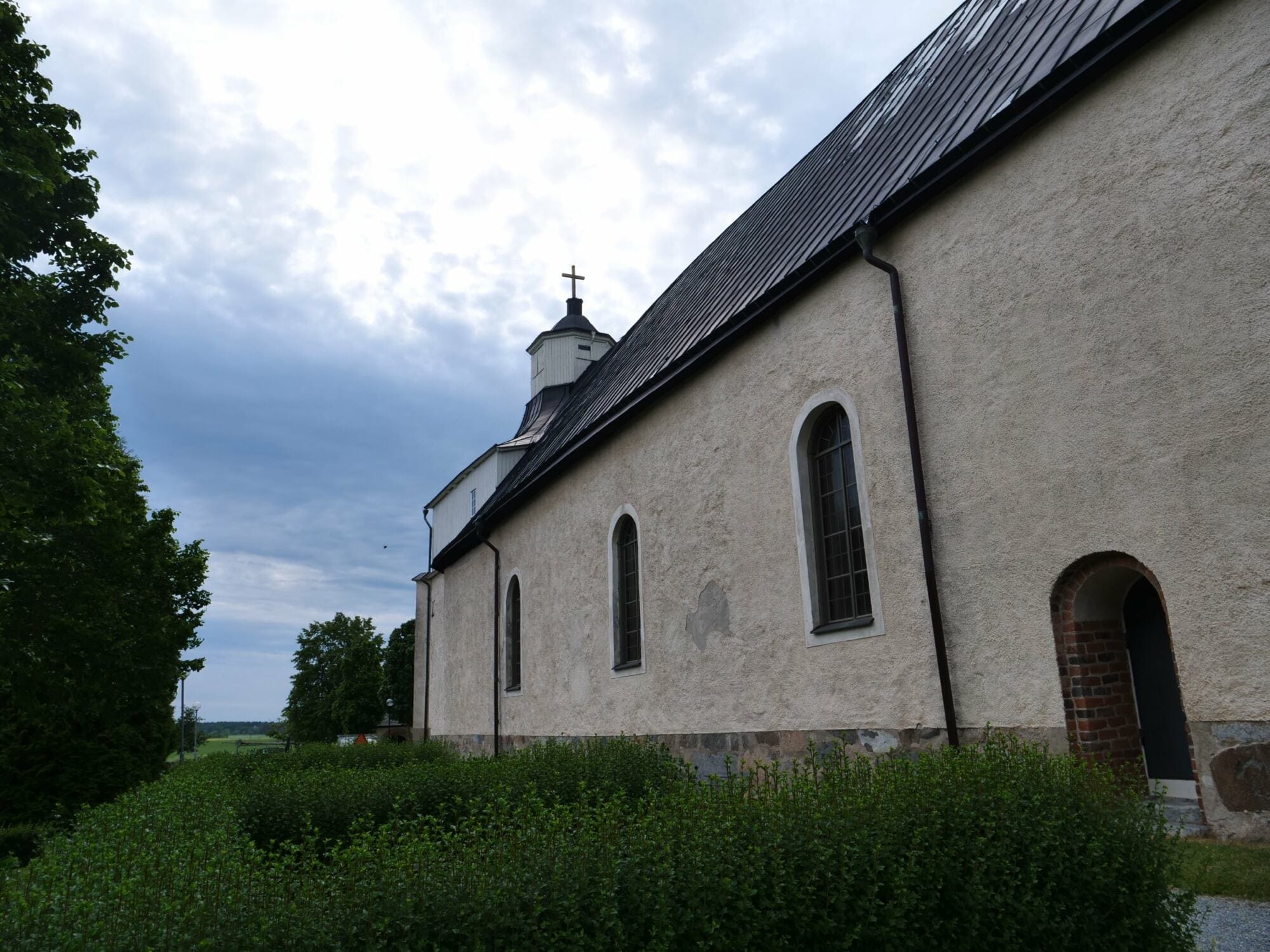In the Middle Ages, Svinnegarn was a well-known name throughout the Nordic countries. A healing spring was believed to cure illnesses and pilgrims made pilgrimages to Svinnegarn to get rid of all kinds of ailments. The porch and church attic were filled with crutches, which the lame and infirm threw away when they drank the healing waters.
Pilgrims were encouraged to donate money to the church, and in the 15th century it was expanded into a large pilgrimage church, including a pilgrim hostel. Today, however, there are few traces of the medieval pilgrimage church, which burned down in the 17th century and was not restored to its former glory.
The interior is dominated by the period of great power and the 18th century. The wealthy families of the region erected coats of arms and paid for the pulpit, altarpieces and more.
Outside the church door is a rune stone (U779), which until 1946 served as a stepping stone between the sacristy and the nave. The inscription reads: Jorund raised these stones after Jarl, his son. God help his spirit."
If the church is open, you can also see an intriguing stone set into the wall of the porch (U778). The text tells about the Ingvar Train. It was a grand expedition to the east with about thirty ships from the Mälardalen area. They set off in 1036, but the journey ended in disaster and only a small group managed to get home five years later. Most of them died of disease around the Black and Caspian Seas. There are about 25 stones that tell the stories of men who traveled with Ingvar. The text on this stone reads: Tjälve and Holmlög had all these stones erected after Banke/Bagge, their son. He alone owned a ship and steered east in Ingvar's army. God help the spirit of Banke/Bagge. Äskil carved.





